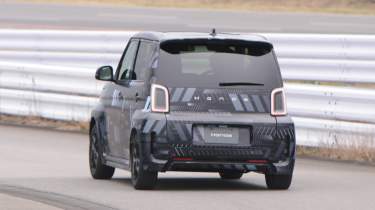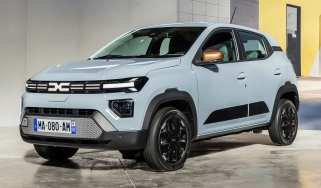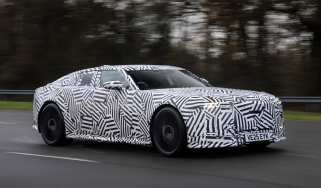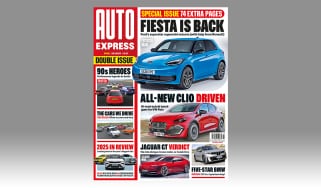New Honda Super-N prototype review: little EV with big charisma can take the kei car global
If there’s a car that proves EVs can be fun, Honda’s tiny superstar might just be it
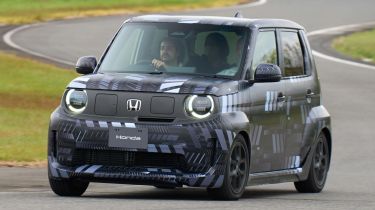
Verdict
Honda has taken a rudimentary electric car from its home market and turned it into something with international appeal. The Honda Super-N isn’t the most sophisticated small electric car around, nor will it offer the best range, tech or comfort in its class, but it has something in spades its rivals don’t: charisma. The way that it looks and drives, thanks in large part to the clever Boost mode, are fantastic, and we can’t wait to see how it feels in its final form on UK roads.
Is it possible to engineer a sense of fun? And by that we don’t mean impressive dynamics or neck-snapping acceleration, but a more pure and unthreatening joy. This is what Honda is hoping to achieve with its new Super-N compact EV, and it’s a claim we’ve got the chance to test before the car’s arrival in the UK next summer.
But first some context. If the Super-N doesn’t exactly look brand new, that’s because its origins are in the Honda One series of kei cars available only in Japan. Kei cars are simple creatures, limited in their dimensions and engine size as a low-cost alternative to standard passenger cars. They’re perfect for nipping around Japan’s megacities, but if you venture out into the countryside, you’ll find they’re just as popular there too.
Used - available now

2022 BMW
7 Series
39,222 milesAutomaticDiesel3.0L
Cash £29,300
2020 Audi
Q2
50,846 milesAutomaticPetrol1.5L
Cash £18,300
2023 Audi
Q3 Sportback
37,840 milesAutomaticPetrol1.5L
Cash £27,200
2023 Ford
Focus
31,501 milesAutomaticPetrol1.0L
Cash £16,500More recently, Honda released an all-electric version called the N-One e, and this is the car that forms the basis of the Super-N. We drove a prototype of the upcoming model in Japan, and while Honda’s engineers were keen not to let too much out of the bag, they did reveal some details.
These include the fact that it shares the N-One’s basic hardware, including the 29.3kWh battery pack and an e-motor mounted on the front axle. This might not be a bespoke EV, but due to the unique packaging of kei cars, there’s enough space for the batteries to fill the gap left by an ICE model’s fuel tank.
Charging and range are still to be confirmed, but the Japanese model’s 183-mile range seems like a reasonable expectation for the Super-N and it’s capable of up to 50kW DC charging.
However, while the powertrain’s hardware is the same, its software has been tweaked. This unlocks more power and torque than the standard N-One e’s 63bhp and 115Nm, and on track our car certainly felt stronger than those rather underwhelming figures.
The biggest change, though, is the new Boost mode, which introduces virtual gears and engine noise. This is the same sort of system as in a Hyundai Ioniq 5 N, and works by pumping noise through the cabin speakers and mapping the performance output of the e-motor to not just sound, but also to feel like an ICE car. In this setting, three cute dials are also displayed on the small driver’s display.
Because the car doesn’t need to conform to kei-class size limits outside Japan, Honda has also widened the N-One’s wheelarches front and rear, and given the nose and tail an equally aggressive design. The wheels are a tiny 15-inch design and all the suspension tuning has been revised, with some development work taking place in the UK.
In fact, when Japanese engineers brought Super-N prototypes to the UK, our comparatively patchy road quality and rough surfaces made the team decide to increase the volume of the fake engine noise.
The cabin is a simple and understated affair, and clearly shares lots with the technically simpler N-One. This is an inexpensive car in Japan – that much is obvious from its hard plastics and rudimentary digital interfaces – but there are new seats with bigger bolsters that give good lateral support in the corners.
Practicality is also a mixed bag. Storage for small items is good, with plenty of cubbies and even some van-like cup-holders in front of the air-vents. But ultimately this is an international model based on something designed for kei-car regulations: it’s a small car with limited space; shoulder room is restricted and there are only two rear seats. Yet despite this, and perhaps because of it, the Super-N just screams with personality – the sort not possible from high-res screens or great connectivity.
Sitting on its tiny wheels, it looks like a miniature sumo wrestler and shows that big-heartedness in the way that it drives, too. Although it’s hard to get a sense of the car’s ride quality around Honda’s silky smooth test track, the car seems happy to mooch around at low speeds in standard mode like any other EV. Despite its upright looks, the seating position doesn’t put you too high above the action, and although the steering wheel is somewhat over-sized, this is a car that inspires confidence on the road.
Press the small blue boost-button on the steering wheel, though, and the Honda’s true character comes out. First of all, the noise hits you. It’s not a rasp nor an overly digital four-cylinder sound like you get a Hyundai Ioniq 5 N, but a deep-chested growl that’s at first shockingly loud. It feels totally fitting, and with the Super-N left in its default D gearbox mode, it swaps through gears as any automatic would. Performance is also pretty impressive, nearly getting to the point where you might elicit a little ‘woo’ when you accelerate.
Hold the left-hand paddle and the car will lock into its manual mode. Now the gearbox feels like a small dual-clutch unit – and for good reason. We ask one of Honda’s engineers if there was a particular model that was used as a benchmark for this system, and he surprisingly replies, “the Golf 7 DSG. It’s very crisp and we liked that.” The Super-N even bounce off a fake rev limiter if you don’t change up – taking a leaf out of the Hyundai 5 N’s book.
We’d have loved the engineers to go a little further with the theatrics, but there are some limiting factors. The speakers, for example, aren’t quite right to introduce faux pops and bangs, nor can you choose between different performance maps inspired by different cars. However, Honda says that both are in development for future models on the next-generation Series 0 architecture.
But back to today’s Super-N, around Honda’s tight test course, the limits of grip are surprisingly high and the car feels incredibly light. This will likely be reflected by an approximately 1,350kg kerbweight – slightly more than the N-One e. In fact, the only thing that immediately strikes us as missing is a little more feeling to the steering – it seems just a touch too heavy, although we can see why it’s arranged as such.
All that’s left to discuss are two key figures that resonate most with any EV buyer: range and cost. It was these two factors that brought down the Japanese brand’s first EV in Europe, the brilliant, but slow-selling Honda e.
However, Honda says it has learnt its lesson, and promises that its new car will go on sale at a competitive price point. How competitive? There are whispers that it could be far less than we expect, dramatically undercutting cars such as the MINI Cooper E and instead focusing on the class below. This means it could be in the low-£20,000 ballpark, up against cars like the BYD Dolphin Surf.
More worrying for the Honda, though, are the Renault Twingo and VW ID.1, which are due to arrive in 2026 and 2027, respectively. These two are poised to bring their own flavour of city-chic charisma to the class, and will likely beat the Honda on price and range. They are mooted to be capable of around 200 miles on a charge, which means the Honda will have to sell on more than just numbers.
Yet even after this very short first drive, we’re confident that this is something Honda will be able to deliver. It’s unusual to be genuinely charmed by a modern car, let alone one with an electric powertrain – summer 2026 can’t come soon enough.
Did you know you can sell your car through Auto Express? We’ll help you get a great price and find a great deal on a new car, too.
| Model: | Honda Super-N |
| Base price: | £20,000-22,000 (est) |
| Powertrain: | 29.3kWh battery, 1x e-motor |
| Transmission: | One-speed automatic, front-wheel drive |
| Power/torque: | 63bhp/119Nm (TBC) |
| 0-62mph: | 8.3 seconds (TBC) |
| Top speed: | 78mph (TBC) |
| Range/charging: | 183 miles/90kW (15-80% in -mins) (TBC) |
| Length/width/height: | 3,450mm/1,500mm/1,630mm (TBC) |
| On sale: | Q2 2026 |

